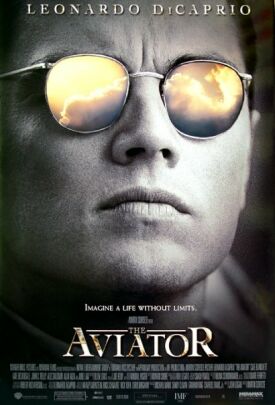. . .The Second Time as Farce
From Crisis
KOBA THE DREAD
LAUGHTER AND THE TWENTY MILLION
by Martin Amis
Talk Miramax/Hyperion, 306 pp., $24.95
0 7866 6876 7
Not long ago, I came across a notice in Publishers Weekly of a new book from New York University Press: 110 Stories: New York Writes After September 11. Edited by Ulrich Baer, the book collects deep thoughts on and stylistic artistry inspired by the events of September 11th, 2001, by “a lineup of literary names.” To be a “literary name,” it seems, you are expected to practise your literary art on the great events of the day — to write up world-historical subjects as a way of making them your own as, say, Norman Mailer did with the moon landings.
Some such thought, I take it, is what lies behind the attempt by Martin Amis, a novelist of some talent, to personalize the slaughter of millions by Josef Stalin, and to make the story of the victims of the man who may qualify as the greatest mass-murderer in history somehow about himself — “a fifty-two-year-old novelist and critic who has recently read several yards of books about the Soviet experiment.” That self-introduction on page four is almost a parody of earnest, baby-boomer narcissism and might be put together with the spectacular bad taste first of nicknaming his small daughter (because of her crying) after the Butyrki prison in Moscow and then of smirkingly “confessing” to having done so as evidence of some novelist’s trick, designed to discredit the narrative voice in order to realize some larger artistic effect.
But any such hope soon dissolves, and we are left in no doubt that the narrator is indeed the same Martin Amis whose name appears on the title page. His purpose is no more subtle than to turn the ghastly realities of Stalinism into what the French call écriture — that assortment of paradox, irony, and word-play that mark the contemporary intellectual’s decorous unseriousness. Vassily Grossman, Amis tells us, observes of an executioner that, because “he looks upon his victim as something other than a human being and thereby ceases to be a human being himself” it could also be said that he “executes himself as a human being. He is his own executioner.” Ah, but the trope can be developed. “This, perhaps, is the meaning of the Terror-Famine of 1933,” he adds: “the self-cannibalized were destroyed by the self-executed.”
“Perhaps” indeed! So, with the same self-conscious wit he observes that “By 1939, it is fair to say, all the people were enemies of the people” or that “Stalin’s superbity was omnivorous. His intention, or need, was to inundate an entire society with his own quiddity.” And just look what he gets out of the fact that “there are many accounts of prison floors strewn with genitals, breasts, tongues, eyes and ears.” Wait for it! “Arma virumque cano.” The suffering he describes with such witty turns, it seems, is hardly real to him until it is turned into writing, or artifice of a by-now very familiar kind. He means to lead us in this way to the bizarre conclusion of his subtitle, that somehow laughter is appropriate in the case of the millions of Russian dead where it is not in the case of the Holocaust victims.
And here it becomes a little difficult to follow the intellectual spoor. Why on earth should he have wished to find matter for laughter among millions slaughtered by Stalin? What could he have been thinking even if there were lots of laughs? But as it happens the great comic novelist finds the jokes rather thin on the ground, and when he picks one up he is liable to get it wrong. Here, for instance, is a riddle: why are the USSR and America the same? The answer, according to Amis, is “Because in the USSR you can joke about America and in America you can joke about America.”But surely, the answer to the riddle must be: “Because in America you can joke about America and in the USSR you can joke about America.” The unexpected asymmetry should only be revealed in the last word.
He also gives scant attention to another sort of asymmetry — what he calls (in the words of Ferdinand Mount) the “asymmetry of indulgence” on the left to the crimes of Stalin as opposed to those of Hitler. Some reviewers of this book have taken it as an admission of and apology for this imbalance in the thinking of the left, and that seems to be the burden of a long letter to his friend Christopher Hitchens included herein. But I think exactly the opposite is the case. For the point of the weird focus on “laughter and the 20 million” seems to me to be to justify the relative indulgence granted to Stalin by the 1960s leftism that Amis never quite repudiates.
Thus he quotes Ian Kershaw, in answer to the question of “who has the weaker claim” as between Hitler’s and Stalin’s hypothetical pleas of diminished responsibility, as saying that the latter’s murderous régime had this to be said for it over the former’s, that it “was not incompatible with a rational ordering of priorities and attainment of limited and comprehensible goals, even if the methods were barbarous in the extreme and the accompanying inhumanity on a scale defying belief.” Well sure. He makes the handsome concession that “whether the methods were the most appropriate to attain the goals in view might still be debated,” but insists that “the attempt to force industrialisation at breakneck speed on a highly backward economy and to introduce ‘socialism in one country’ cannot be seen as irrational or limitless aims.
But this is to take seriously Stalin’s nonsense about industrialisation and socialism as if it bore any relation to the reality of economic life in the Soviet Union in exactly the same way that some apologist for Naziism might attempt to take seriously Hitler’s nonsense about the Jew being the cancer of humanity. As wicked lies designed solely as a cover for unspeakable crimes the two rationales are indistinguishable. Amis elsewhere says that Stalinist Communism can take credit for two achievements, industrialization and the defeat of Hitler, but this is true only if we suppose that there would have been no factories built in Russia without the Soviet slave-state, or that the Russian people would not have fought as they did without Stalinist totalitarianism.
This last may be true, at least, since part of the Russian success was owing to the “blocking units,” pioneered by Trotsky, who were prepared to shoot the front line troops if they attempted to retreat. But that Amis is still prepared to swallow so much of the residuum of toxic Stalinist propaganda is also suggested by his repetition — as a “ghostly confirmation” of his own sagacity in opposing the Vietnam war during his (even more) left-wing youth — of the patently bogus statistic that “in the late 1980s, the number of home casualties in the war was officially exceeded by the number of suicides among its veterans.” Whatever else may be the catch from his troll through those “several yards of books,” he is still committed to the left-wing doctrine of moral equivalence and its quasi- theological position on what he calls the “ideological brutalization” wrought upon America by its Vietnamese adventure.
Why, then, has he written this book? What was he thinking? Maybe just for a laugh. But even if there is a certain gallows humor to be unearthed from the rich burial ground of so many millions, it is their laughter. They have earned the right to it by unimaginable hardships. To claim an easy share in it from the comfort of a book-lined study in the West is a failure of imagination, a buckling of the moral knees under the weight of juvenile narcissism grown fat and embarrassing in middle age. However unlike the Holocaust the Stalinist crimes may be, they are like it in warning away the artist in search of drama and sensation and fine writing. Both demand the dignity of a sober and unadorned retelling.
Discover more from James Bowman
Subscribe to get the latest posts to your email.







